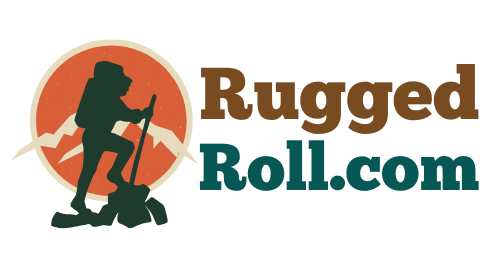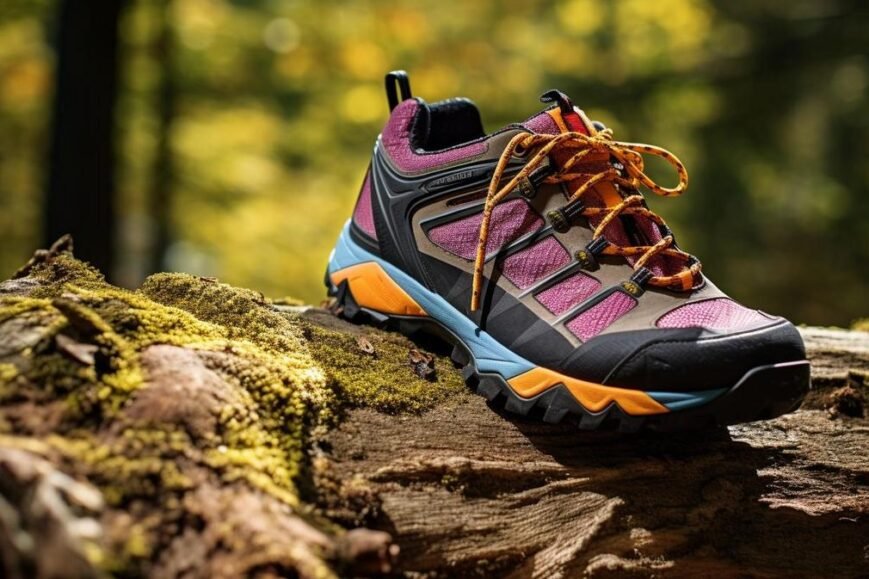- #Hikingboots provide ankle support, durable construction, and are suitable for rough, uneven terrain with heavy packs.
- #Hikingshoes offer flexibility, and comfort, and are better for light, easy trails.
- Boots have thick, stiff soles for traction and protection, while shoes have lighter soles for a more natural stride.
- Boots are best for long, challenging hikes; shoes excel in casual, short hikes.
- Fit, terrain, weather, and individual hiking habits should dictate the choice of footwear.
- Proper care, including cleaning and avoiding direct heat when drying, extends the lifespan of hiking gear.
- Current trends in hiking footwear focus on personalized fit and improved performance.
- In terms of costs, boots may have a higher upfront price but can be more cost-effective long-term due to durability and repairability.
- The type of footwear affects the hiking experience on different terrains, with boots better for stability on uneven ground and shoes ideal for lighter, faster movement.
Stomping through the wild calls for the right kicks. Boots or shoes, that is the big question. Let’s dig into what sets them apart! HikingVault.com unpacks the real talk on hiking boots versus shoes just for you. Get the scoop on ankle support, weight differences, and which one to pick for your next trail-blazing adventure. Stick with us to step up your outdoor game!
What Are the Fundamental Differences Between Hiking Boots and Shoes?
The main difference between hiking boots and shoes is their design. Hiking boots cover your ankles. They are made to support and protect your feet on tough trails. Shoes have a low cut. They are more for easy paths and daily wear.
Defining Hiking Boots and Hiking Shoes
Let’s talk about what makes boots and shoes for hiking different. Boots are tall to support your ankles. They help a lot on rocky, uneven ground. Shoes are like your daily sneakers but better for trails. They are good for a quick hike on a clear path.
Key Differences in Design and Construction
Now, think about how they are built. Boots often have thick soles. They have a lot of cushion for your feet. Shoes are lighter, with less cushion but more bend. This lets you move quickly and easily.
Assessing the Varying Levels of Ankle Support
Ankle support is a big deal in hiking boots vs shoes. Boots go up past your ankles. This keeps your ankles safe when you hike on rough ground. Shoes sit below your ankles. They are not so stiff, so you move easier, but they don’t protect as well.
Weight Comparison Between Boots and Shoes
Hiking footwear also varies in weight. Boots can be heavy but solid for a big adventure. They can tire your feet on a long hike. Shoes are lighter. They don’t tire your feet as much, so you can walk farther with less effort.
When Is It Best to Choose Hiking Boots Over Shoes?
Boots are better for tough hikes. They give more ankle support and keep you safe. Boots grip well on rough land. They help carry heavy packs too.
Is a shoe or boot better for hiking? Boots are better in rocky or uneven areas. They protect your feet more than shoes. This is because boots cover your ankles and have stiff soles.
Suitability of Boots for Different Terrains:
Boots excel in wild, bumpy lands. With a solid grip, they stop you from slipping. You can step over rocks and roots without worry. This makes boots a top pick for trails.
Advantages of Ankle Support in Rugged Areas:
Your ankles twist easier on rough paths. Boots stop this with firm ankle support. They hold your ankle tight. This helps in areas where you might get hurt.
Comparing Durability and Protection:
Boots last longer than shoes. They are made strong to take more hits. Thick materials keep your toes and the bottom of your feet safe. Boots keep out water too.
Hiking Boots for Multi-Day Backpacking Trips:
On long trips, boots are a must. They help with the extra weight on your back. Boots make it easier to walk for days. They also deal with changes in the trail.
Do Hiking Shoes Offer Any Unique Advantages?
Are hiking boots overkill? No, not always. But hiking shoes have their place too.
Hiking shoes are king when it comes to flexibility. They bend and twist, which can help your feet react to the trail. This means fewer stumbles and sprains. They fit more like your comfy everyday sneakers but are tough enough for rough ground.
The comfort of trail runners is another plus. Their design lets your feet feel the trail beneath you. This makes for a more natural stride and less tired feet at the day’s end.
Why choose lightweight shoes for day hikes? It’s simple. They make for quick and easy walking. You might not need the heavy-duty protection of boots for a short, smooth trail. Shoes like this are often lighter than boots and easier to pack.
At times, boots may be more than you need. Think about the trail. Is it clear and flat? Then maybe a lighter shoe is a better pick. It comes down to choosing the right gear for the right time.
What Are the Top Considerations When Selecting Hiking Footwear?
Choosing the right hiking gear is key for a great outdoor trip. When picking footwear, think about the fit, weather, and your hiking style. Shoes for women and men’s trekking shoes differ in design. Make sure they match your foot shape well.
Fit for hiking gear is not a one-size-fits-all deal. Women’s hiking shoes often have a narrower fit, while men’s are wider. Find a fit that holds your foot snugly, with no sliding but not too tight.
You’ll want waterproof hiking gear for wet trails. Not all hikes need this, but for rainy spots or crossing streams, it helps. Water-resistant shoes can keep you dry and comfy.
Next, let’s talk about how often you hike. For casual hikes, a light shoe works well. But for rough trails or longer trips, you might want stronger boots.
Lastly, see what others say about the gear you like. Look up “Hiking boots vs shoes Reddit” or “Hiking boots vs shoes women’s.” Reviews can guide you to make a wise choice. Happy trails!
How Does the Sole Affect Performance in Hiking Boots and Shoes?
The sole of your footwear is key to good grip and safe steps. Boots often have thicker, stiffer soles. This setup gives more traction on rough trails. Shoes may have more bend and less weight. This makes them feel more like regular sneakers. When you pick boots or shoes think about the sole’s role.
For those asking about the types of soles and their impact on traction, here’s the deal. The sole’s tread pattern can dig into dirt and mud, keeping you stable. Soles with deep grooves are great for this. So how do you choose between hiking boots vs sneakers? Consider where you will hike. If you’re on tough trails, boots with their tough soles are a must. They hold up better than sneakers.
Now, let’s talk cushy comfort. Trail runners are like a soft bed for your feet. They often have cushioning that eases each step. However, this softness can mean less feel for the trail. Hard hiking boots don’t squeeze as much. They do a better job at spreading your weight, even on jarring ground. Boots can protect from sharp rocks that might poke through softer soles.
Then there’s the question of sole stiffness in boots versus shoes. Stiff soles support your foot on uneven land. They reduce the odds of turning your ankle. Shoes flex more and let you move fast on easy trails. But when it comes to rough, wild paths, boots with their firm soles are best. They give you a solid base no matter the twists and turns.
In the battle of hiking boots vs sneakers, remember this. Boots’ toughness and grip top the list. Sneakers may come up short on wild trails. Yet, they win on lightweight comfort. When you choose, think about where you’ll hike. Rocks, roots, and length of your hike matter. Pick boots for challenging paths. Go with shoes or sneakers for a walk in the park.
What Are the Best Care Practices for Hiking Boots and Shoes?
Routine care makes hiking boots and shoes last longer. To dry them fast, avoid direct heat. Look for signs of wear. Repair or replace soles on time. Choose sustainable ways to maintain your gear.
Outdoor trails challenge our footwear. But with proper care, we can keep them in top shape. For maintaining hiking footwear, keep them clean. Remove dirt with a brush after each hike. This stops materials from breaking down too soon.
When dealing with wet boots and quick-dry hiking materials, be smart. Don’t place wet shoes near fires or heaters. This harms them. Instead, stuff them with newspaper. It wicks the moisture away. Leave them to air dry in a warm spot with good airflow. This way, they’ll be ready for your next outdoor adventure without losing their shape or comfort.
Knowing when to consider replacement or resoling is crucial. Check your boots’ soles often. As the treads wear down, you lose grip. This puts you at risk on slippery surfaces. If the upper part is still good but the sole is worn out, get them resoled. This saves money and is better for our planet compared to buying new boots.
Sustainable practices in hiking footwear care include reusing and recycling. When your boots can’t take another step, don’t just toss them. Some companies recycle old shoes or donate them for second-hand use.
By keeping these tips in mind, you’ll tread lightly on the earth while enjoying its vast, open trails.
How Can Specific Features in Hiking Boots and Shoes Enhance Safety and Comfort?
Do hiking boots offer more ankle support than shoes? Yes, hiking boots give more support to your ankles. This helps a lot when you walk on rough trails. With boots, your ankles stay stable. So, you are less likely to twist them if you step wrong.
Boots have a taller design. This keeps your ankles snug and safe. On wild paths, roots, rocks, and uneven ground can hurt your ankles. Boots protect you from these dangers. They make sure you can hike far without getting hurt. Shoes are good, too, but they can’t give the same ankle care.
Why is cushioning important in hiking footwear? Cushioning keeps your feet comfy on long treks. Good padding stops your feet from getting too tired. Trail runners have great cushioning. They feel soft and let your feet breathe.
With the right amount of cushion, you can walk for hours. This soft layer is in both boots and shoes. It helps take in shock from each step. The cushion keeps your feet from feeling hard rocks and sticks. Even after many miles, your feet can still feel alright.
Can you use orthotics with hiking footwear? Yes, many boots and shoes are orthotic-friendly. That means you can put special insoles in them. These insoles fit your feet just right. They help if you have foot issues or need extra support. So, when you pick out hiking wear, check if you can use custom orthotics with them.
If you have insoles made just for your feet, they can slide right into good boots or shoes. This extra layer can make your hike much more snug. It’s key for folks who hike a lot or have foot problems. A good fit means more joy on the trail.
Are toe caps and heel guards important? Toe caps and heel guards are like a shield for your feet. They are there to protect your toes and heels from getting hurt. On the trail, you can bump your feet on all sorts of things. Pointy rocks, thick roots, and other stuff can hurt. But, with toe caps and heel caps, your feet stay safe. Hiking boots often have these parts made strong. Shoes might have them, too, but they may not be as tough.
What Are the Latest Trends in Hiking Boots and Shoes for Men and Women?
We see cool new trends for men’s hiking footwear and hiking shoes for women. Makers now focus on shoes that fit women just right. Men’s trends show a push toward tech and fresh styles. Each year brings top-rated men’s hiking shoes and women’s specific fit boots. Let’s dive into women’s specific fit and comfort features first.
We know comfort is key. Brands now design boots just for women. They match a woman’s foot shape. This gives a snug, comfy fit. It means less pain on long treks. For men, the focus is more on the latest tech. Their shoes might use new materials. Or they could boost your foot’s support. Top-rated styles for both men and women mix snug fit, strong grip, and lightweight construction. This means a shoe that won’t let you down on hikes.
But the change is not just for today. These shoes keep getting better. The aim is to help your feet move and feel just right on long trails. The evolution of design for enhanced performance has a clear goal. It is to make sure your hike feels good from start to end. Remember, a shoe that feels off can spoil your adventure. So, the right design and fit matter a lot. Whether you choose boots or shoes, go with the trend that meets your needs. Pick what feels best and keep you going mile after mile.
In conclusion, the trends for hiking footwear focus on a personal and comfy fit. They also strive for the best performance. What you choose should align with these goals. This way, you can enjoy every step of your outdoor journey.
Is There a Cost Difference Between Hiking Boots and Shoes Over Time?
Do boots cost more than shoes in the long run? Yes, but it depends. Hiking boots often have a higher initial price. Shoes tend to be cheaper at first. But, when looking at the full lifespan, boots might end up costing less. Why? It’s due to how long they last and the options for fixing them. Let’s break that down.
Boots are made tough. They often last longer than shoes. A longer life means you buy new ones less often. So, even if they cost more upfront, you save money as years pass. Hiking shoes wear out quickly. You might need to buy a new pair more often.
Another point is about fixing over replacing. Many hiking boots have soles you can replace. When the bottom wears out, you don’t need a whole new boot. Just get a new sole. We call this “resoling.” Some services do this for you. It can save money and keep boots on your feet for longer.
Overall, think about the long-term value of your footwear. Don’t just look at the price tag today. Consider how often you hike and how rough you are on your feet. Will you be hitting the trails twice a year or every weekend? Strong, long-lasting boots could be your friend for those tough, long trails. But if you walk less often or stick to easy paths, a good pair of shoes might be better for your wallet.
In short, boots may cost more at first. Yet, they may offer more value when you add up their lifetime. Shoes can seem like a deal. But, if you replace them more, they might cost more over time. Think about how and where you walk. Then, choose what gives you the most for your money.
How Does Footwear Type Affect Hiking Experience on Different Terrains?
When you’re trail running, shoes are often better than boots. They are lighter and let you move faster. On rocky trails, shoes need tough soles. For the best grip, look for soles made for rocks.
Boots are great on uneven ground. They give your ankles support and keep you safe. But if you’re just walking on the pavement, choose shoes. They are more comfy for long walks on flat surfaces.
When picking outsoles, think about where you will hike. Soles that don’t slip help you stay on your feet. On dirt or grass, you need soles that grab the ground well. For city walks or easy paths, soles can be smooth and still work fine.
Your feet feel different on trails than on pavement. Shoes bend more easily and are good for a smooth walk. Boots are stiff but protect your feet on rough paths. The right footwear makes hiking fun on any land.
Conclusion
So, hiking boots or shoes? It depends! Boots handle tough trails and help your ankles. Shoes are light and comfy for easy walks. Boots last longer, but shoes might feel better. Think about where you hike, and pick the right pair. Happy trails!
![]()




